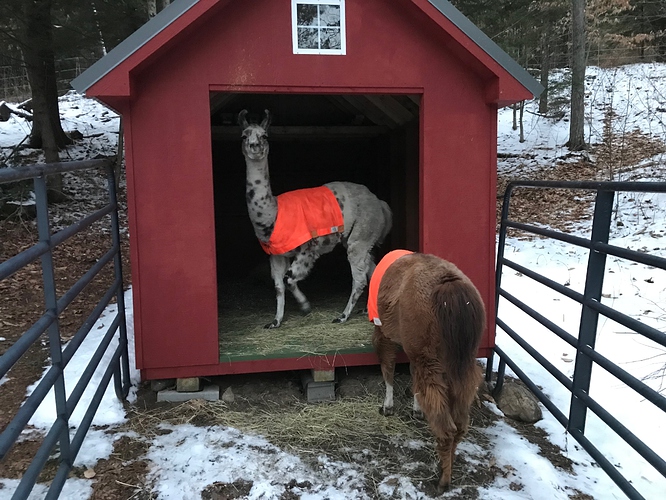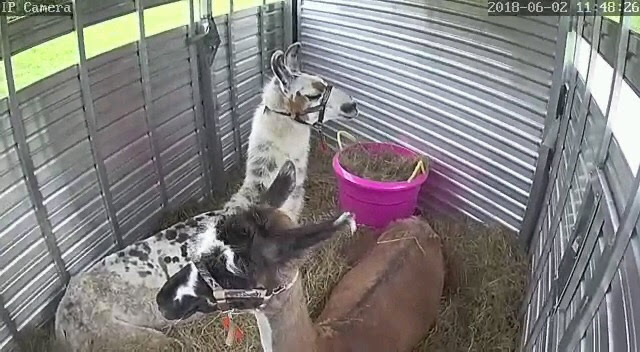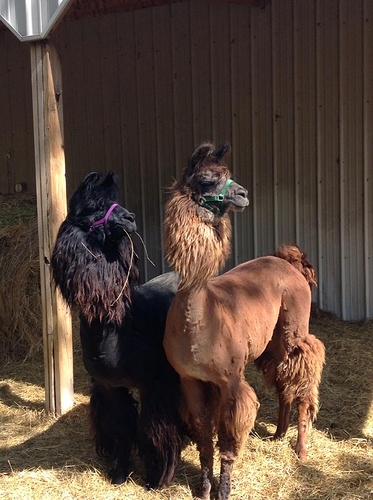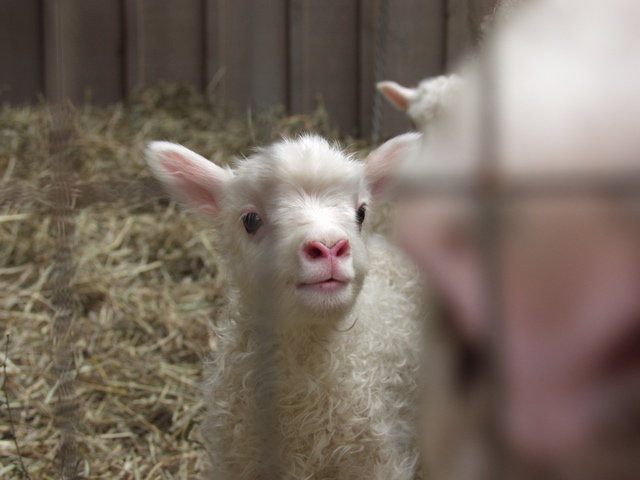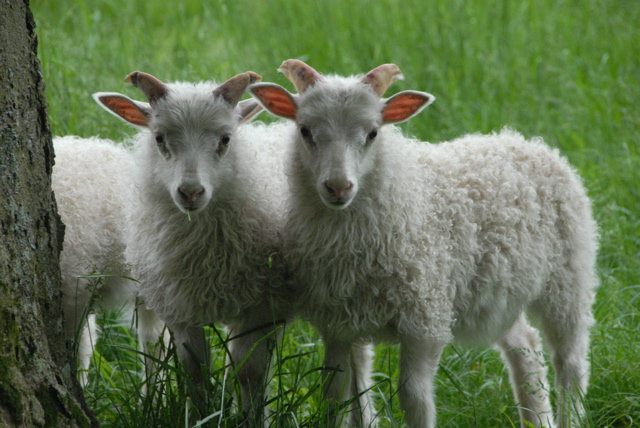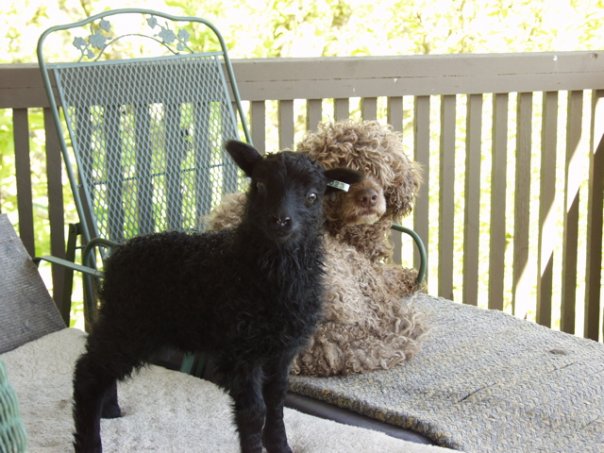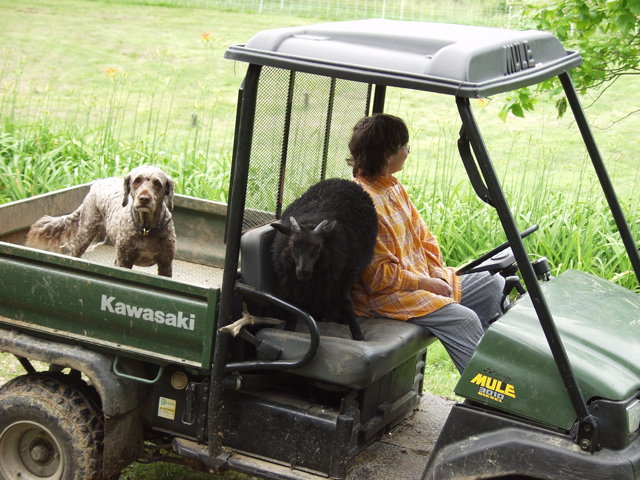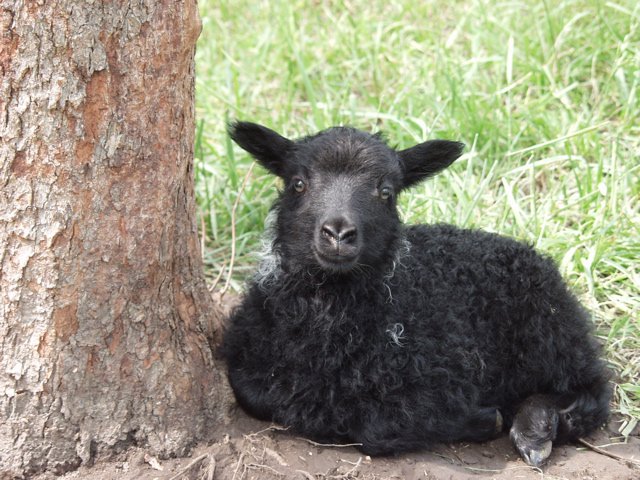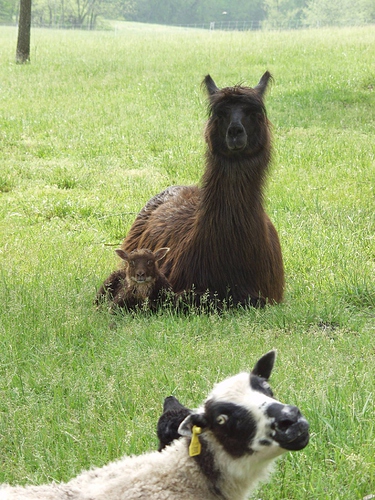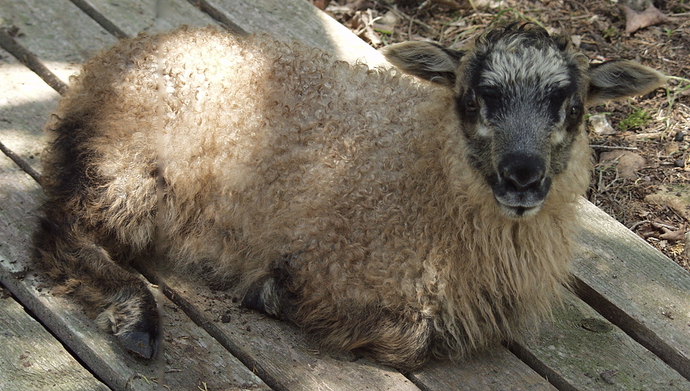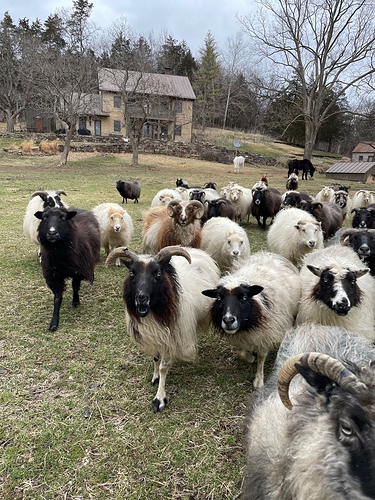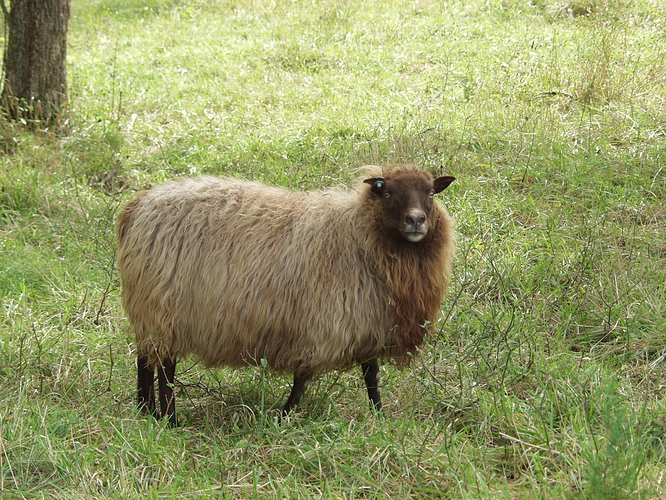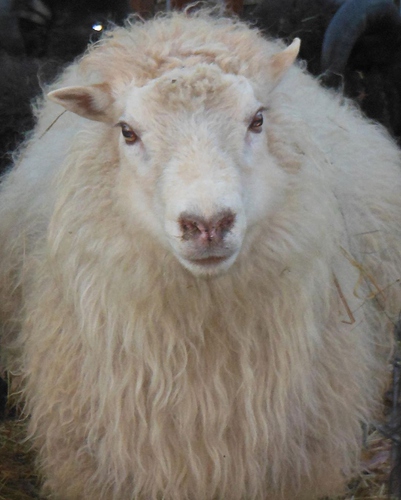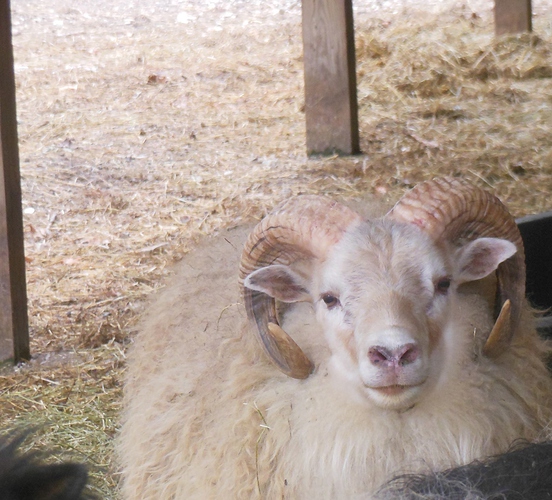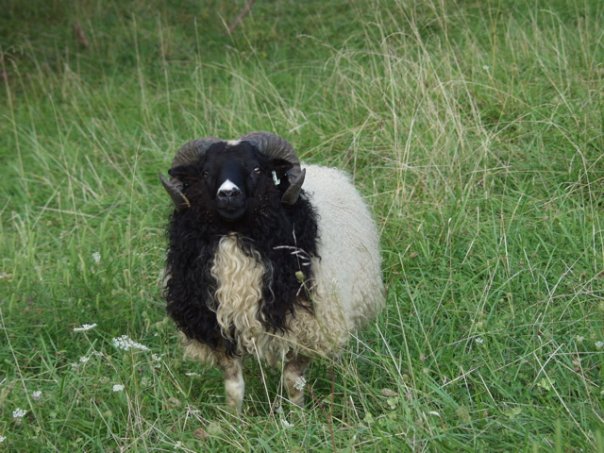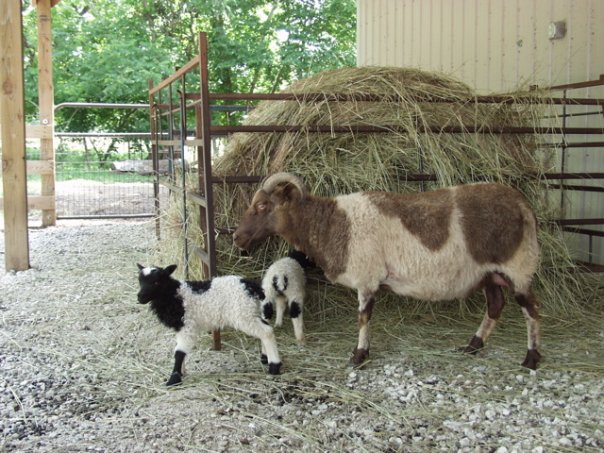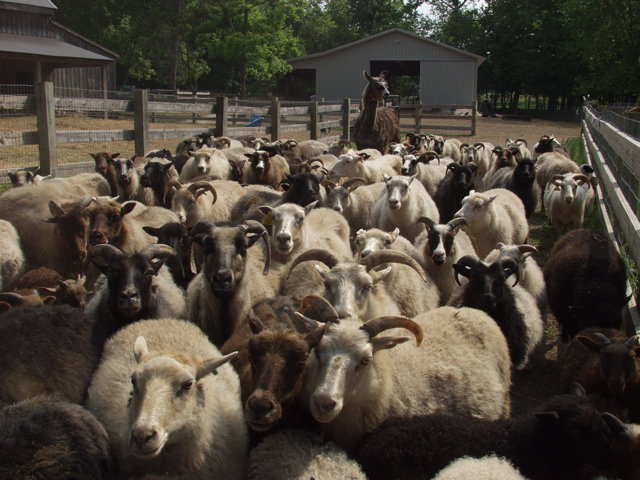We have two! My husband “wanted” a camel but settled for llamas. He networked through GALA (Greater Appalachian Llama & Alpaca Assoc.) and found two 7yo girls who had been used for a while for packing in the Rockies, so they had that training. He hiked with them frequently for a year (day hikes near our home in New Hampshire) until he got a horse; now they spend most of their time in pasture but do the occasional llama hike and tote tools on workdays for the local trail club. They are also annual stars of the llama barn at the Fryeburg (ME) Fair.
They are pretty easy to take care of. They’ve stayed healthy on Poulin maintenance llama feed & llama minerals, and hay or pasture. My husband gives them sub-q dectomax injections every six weeks to prevent meningeal worm, and trims their toenails while he has them in. They get spot-on (Proforce 50/Equispot) on the same schedule as the horses but at half the dose to help fight ticks. And I think that’s about it.
Oh, and annual shearing, of course. Kate has an AmericanIzed fiber coat, like a giant alpaca. Nikki has the traditional llama coat, which is 2-layered, with a fluffy undercoat and coarse straight guard hairs. My husband had thoughts of learning to spin and did learn to knit, but between riding and getting involved in some local solar/green energy groups finds he has no time. I think he ended up giving away the accumulated fiber from Kate’s shearings, and is looking for someone interested in Nikki‘s, which is not so good for spinning but I understand would work well for felting.
Very few people have been able to train their llamas to let them walk up to them to catch them, and we are no exception, so their run-in shelter is in a small catch pen, and they are fed in there. Close them in while they are eating, or resting in there, and they know the jig is up and will let you halter them. Otherwise they are curious and happy to be near you but don’t want hands on. Most of their fencing is 4 foot tall, 4 strand electric rope (but if we let them into the horse area which has two strand, 40” tall electric rope they respect it); we use corral panels for much of the catch pen. When we bring them in the barn to hold them for any reason, the two fit together in one horse stall.

